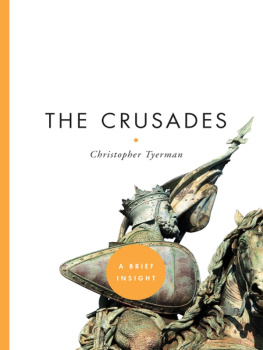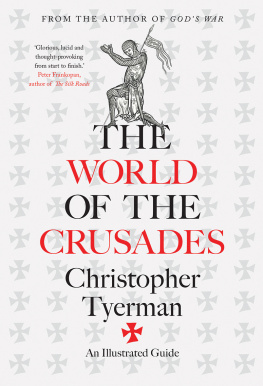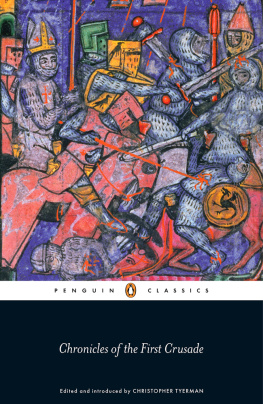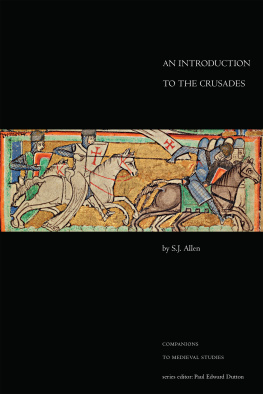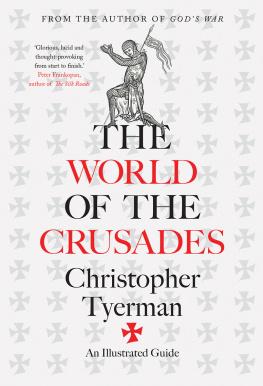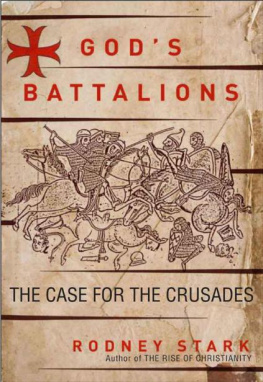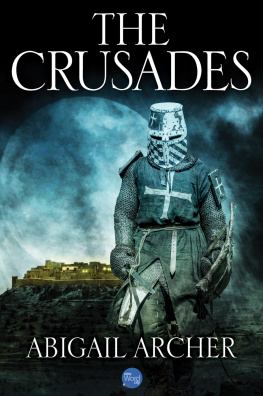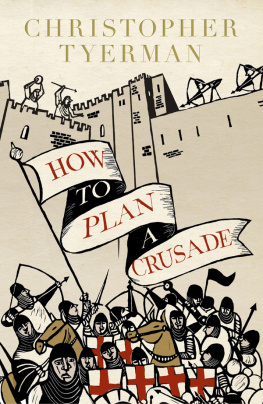

THE CRUSADES

Christopher Tyerman


New York / London
www.sterlingpublishing.com
STERLING and the distinctive Sterling logo are registered trademarks of Sterling Publishing Co., Inc.
Library of Congress Cataloging-in-Publication Data Available
10 9 8 7 6 5 4 3 2 1
Published by Sterling Publishing Co., Inc.
387 Park Avenue South, New York, NY 10016
Published by arrangement with Oxford University Press, Inc.
2007 Christopher Tyerman
Illustrated edition published in 2009 by Sterling Publishing Co., Inc.
Additional text 2009 Sterling Publishing Co., Inc.
Distributed in Canada by Sterling Publishing
c/o Canadian Manda Group, 165 Dufferin Street
Toronto, Ontario, Canada M6K 3H6
Book design and layout: The DesignWorks Group
Please see picture credits on page 211 for image copyright information.
Manufactured in the United States of America
All rights reserved
Sterling ISBN 978-1-4027-6891-0
For information about custom editions, special sales, premium and corporate purchases, please contact Sterling Special Sales Department at 800-805-5489 or .
Frontispiece: An armored knight from the time of the Crusades is depicted in this detail from a twelfth-century fresco decorating the Chapel of St. Gilles, in Montoire-sur-le-Loir, France.
For
P.P.A.B.
CONTENTS
WHILE THE EIGHTH-CENTURY Scottish philosopher and historian David Hume thought the Crusades the most signal and most durable monument of human folly that has yet appeared in any age or nation, he admitted they engrossed the attention of Europe and have ever since engrossed the curiosity of mankind. The reasons for this are not hard to find. The twin themes of judgment on past violence and fascination with its causes have ensured the survival of the Crusades as more than an inert subject for antiquarians. Since Pope Urban II (108899) in 1095 answered a call for military help from the Byzantine emperor Alexius I Comnenus (10811118), by summoning a vast army to fight in the name of God to liberate eastern Christianity and recover the Holy City of Jerusalem, there have been few periods when the consequences of this act have not gripped minds and imaginations, primarily in western society but increasingly, since the nineteenth century, among communities that have seen themselves as heirs to the victims of this form of religious violence. With the history of the Crusades, modern interest is compounded by spurious topicality and inescapable familiarity. Ideological warfare and the pathology of acceptable communal violence are embedded in the historical experience of civilization. Justification for war and killing for a noble cause never cease to find modern manifestations. The Crusades present a phenomenon so dramatic and extreme in aspiration and execution and yet so rebarbative to modern sensibilities, that they cannot fail to move both as a story and as an expression of a society remote in time and attitudes yet apparently so abundantly recognizable. Spread over five hundred years and across three continents, the Crusades may not have defined medieval Christian Europe, yet they provide a most extraordinary feature that retains the power to excite, appall, and disturb. They remain one of the great subjects of European history. What follows is an attempt to explain why.
The phenomenon of violence justified by religious faith has ebbed and flowed, sometimes nearing the center, sometimes retreating to the margins of historical and contemporary consciousness. When I was asked to write this short introduction to the Crusades, holy war, Christian or otherwise, was not high on the public or political agenda. Now when I have finished, it is. So this work conforms to a pattern traced in what follows, of historical study relating to current events. My views on that relationship will, I hope, become clear enough. What remain hidden except to the lynx-eyed are the debts to many other scholars, colleagues, and friends from whom I have learnt so much and should have remembered so much more. They must forgive a collective thanks. The faults in this libellus are mine not theirs. The dedication is a very small recompense for incalculable munificence of advice, support, and friendship over so many years, in dark days as well as bright evenings of exhausting but inexhaustible hospitality.
C.J. T.
O XFORD
M AY 22, 2005
Europe and the Mediterranean:
Christianity and Its Non-Christian Neighbors
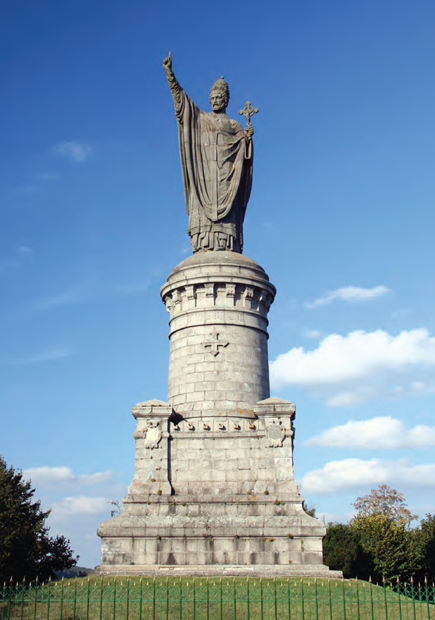
Pope Urban II, immortalized here in a sculpture in Champagne, France, appealed for a crusade to the East.

BETWEEN 1189 AND 1191 , a cosmopolitan army of western invaders besieged the Palestinian coastal city of Acre, modern Akko. Their camp resembled the trenches of the Western Front during the First World War, fetid, disease-ridden, and dangerous. One story circulated to boost morale concerned the heroic death in battle a few years earlier of a knight from Touraine in France, Jakelin de Mailly. A member of the Military Order of Knights Templar, a soldier who had taken religious vows of poverty, chastity, and obedience in order to devote his life to protecting Christians and their conquests in Syria and Palestine, Jakelin had been killed fighting a Muslim raiding party in Galilee on May 1, 1187. In describing what proved to be a massacre of the Christians, the story had Jakelin fighting on alone, hopelessly outnumbered and surrounded. The chronicler who recorded the story before 1192, possibly an Englishman and certainly a veteran of the siege of Acre, is worth quoting in full:
He was not afraid to die for Christ. At long last, crushed rather than conquered by spears, stones and lances, he sank to the ground and joyfully passed to heaven with the martyrs crown, triumphant. It was indeed a gentle death with no place for sorrow, when one mans sword had constructed such a great crown for himself from the crowd laid all around him. Death is sweet when the victor lies encircled by the impious people he has slain with his victorious right hand The place where he fought was covered with the stubble which the reapers had left standing when they had cut the grain shortly before. Such a great number of Turks had rushed in to attack, and this one man had fought for so long against so many battalions, that the field in which they stood was completely reduced to dust and there was not a trace of the crop to be seen. It is said that there were some who sprinkled the body of the dead man with dust and placed dust on their heads, believing that they would draw courage from the contact. In fact, rumor has it that one person was moved with more fervor than the rest. He cut off the mans genitals, and kept them safe for begetting children so that even when dead the mans membersif such a thing were possiblewould produce an heir with courage as great as his.

